
Roots
Have you ever paused, just before resting your head, to ponder the quiet dialogue happening between your hair and the world it meets? This silent exchange, particularly as slumber descends, plays a significant role in the vitality of your strands. We often perceive our hair as a singular, flowing entity, yet beneath the surface, a universe of microscopic scales governs its very resilience and gleam. Understanding these minute structures is the first step toward a more compassionate and informed approach to hair care, especially when considering the surfaces our hair encounters for hours each night.
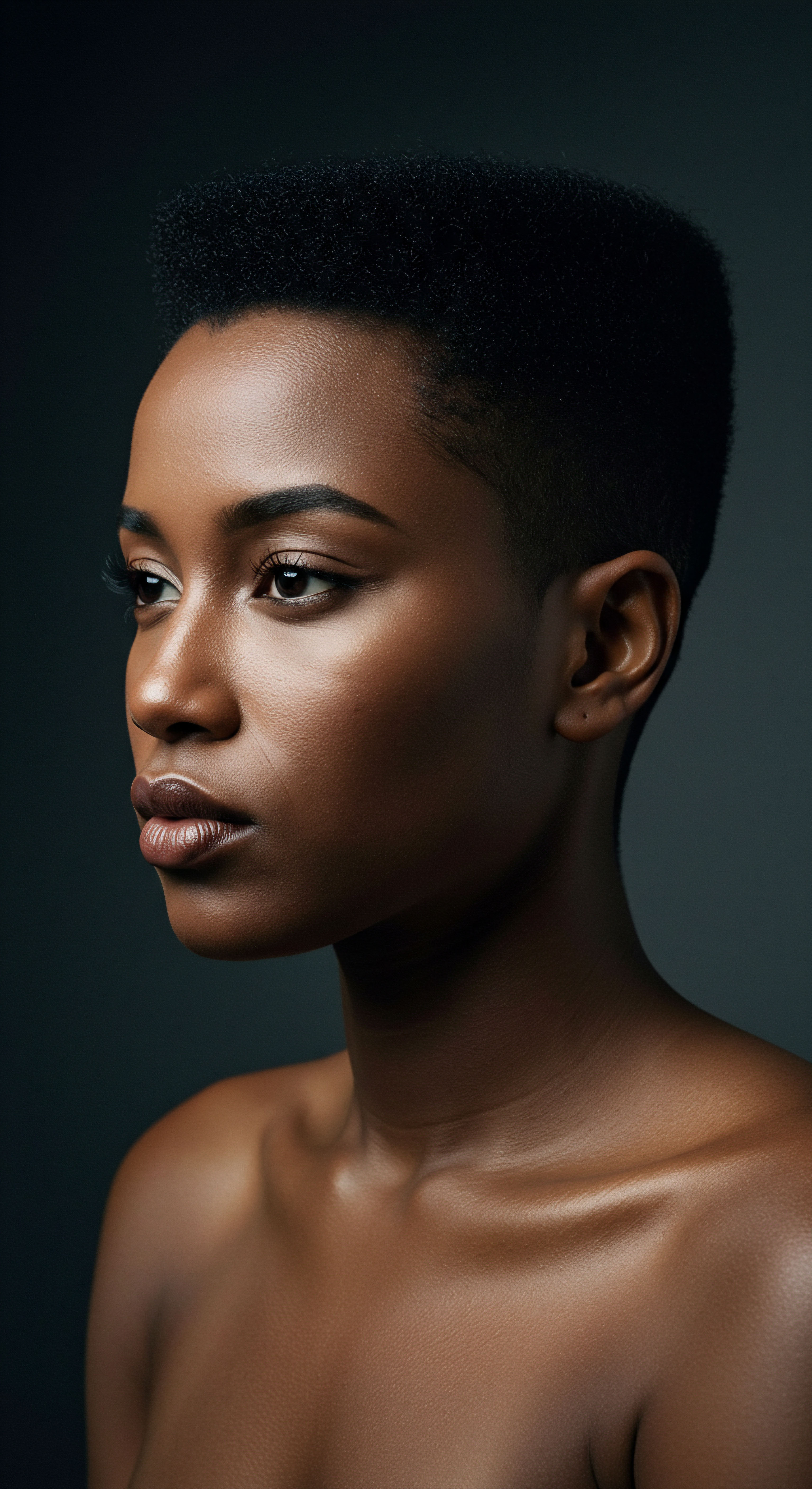
The Unseen Shield of Your Strands
At its core, each strand of hair is a marvel of biological engineering, composed of three primary layers. The innermost part, the medulla, exists primarily in thicker hair types, a central column whose full purpose is still being explored. Surrounding this is the cortex, a robust layer of keratin proteins and structural lipids that accounts for the bulk of hair’s mass, dictating its strength, color, and texture. But the true guardian, the layer constantly interacting with the outside world, is the Cuticle.
This outermost sheath consists of dead, overlapping cells, much like shingles on a roof, all facing downwards towards the hair tip. This arrangement provides mechanical strength and a protective barrier against external forces.
A healthy cuticle lies flat and smooth, allowing light to reflect evenly, resulting in that coveted shine. This smooth surface also minimizes friction between individual hair strands and against external elements. Beyond its visual contribution, a well-sealed cuticle helps regulate the hair’s moisture content, keeping vital hydration locked within the cortex and preventing excessive absorption from the environment. When these delicate scales are disturbed, lifted, or damaged, the hair’s inner layers become exposed, leading to a cascade of unwelcome outcomes such as frizz, dryness, and increased susceptibility to breakage.
The hair cuticle, a microscopic layer of overlapping scales, serves as the primary defense for each strand, influencing its sheen and resilience.
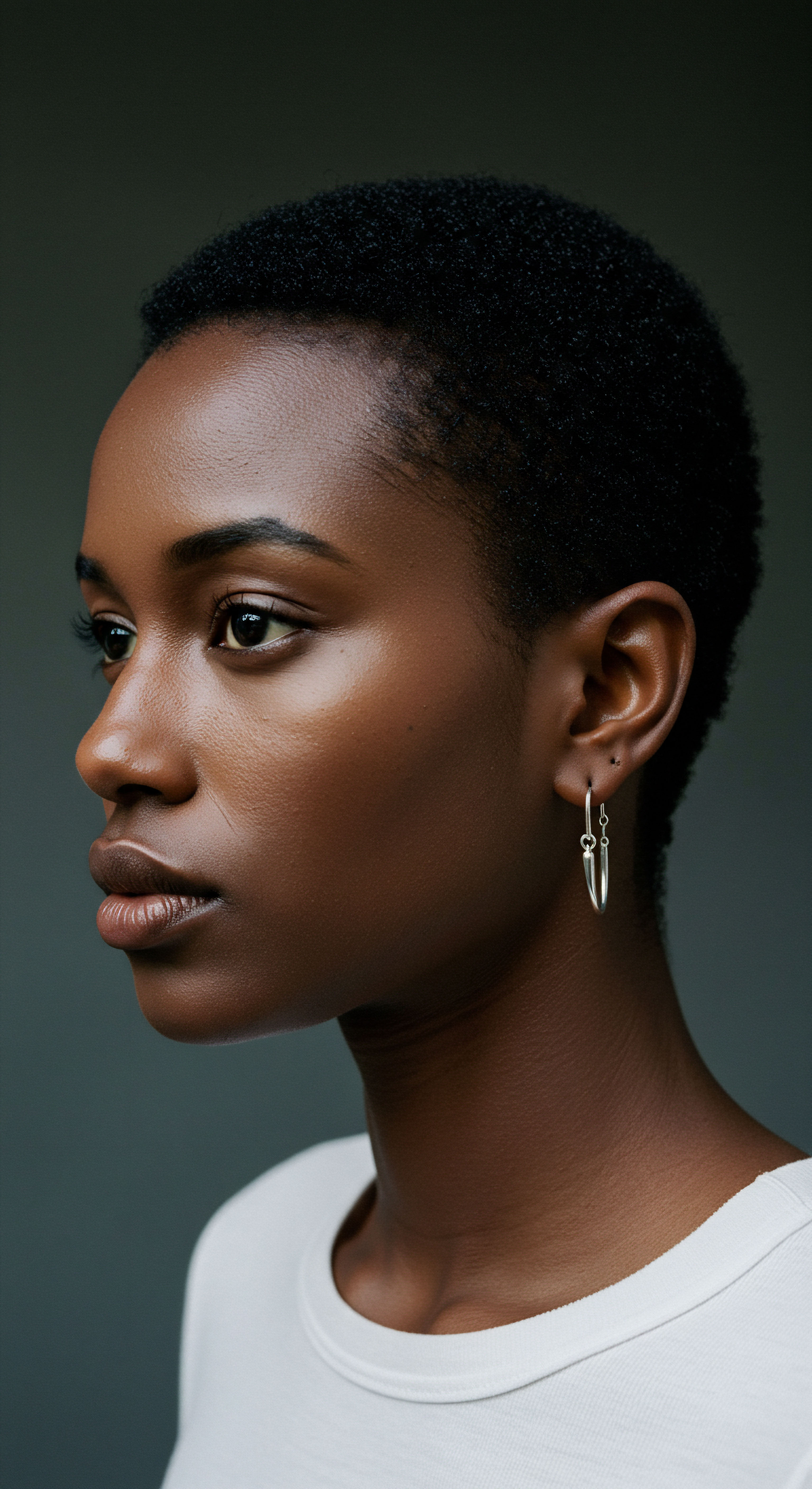
How Surfaces Influence Hair’s Outer Layer
The relationship between your hair cuticles and the surfaces they touch is a constant dance of friction and absorption. Throughout the day, our hair brushes against clothing, hands, and the elements. However, the prolonged contact with a sleep surface, often for six to eight hours each night, presents a unique and sustained challenge to the cuticle’s integrity. The texture of the pillowcase, the way we move during sleep, and even the ambient humidity in the sleeping environment all play a part in this nightly interaction.
When hair rubs against a surface, especially one with a rough or uneven texture, the friction can cause the cuticle scales to lift. This lifting exposes the hair’s inner cortex, making it more vulnerable to moisture loss and mechanical damage. For textured hair, where cuticle layers may naturally be slightly raised due to the hair’s coiled structure, this vulnerability is even more pronounced. The coiled shape creates more points of contact with surfaces, potentially increasing friction and the risk of cuticle disruption.
Consider the contrast between sliding a hand over a smooth pane of glass versus a coarse piece of sandpaper. Your hair experiences a similar sensation at a microscopic level with different sleep surfaces. The choice of pillowcase material directly influences the degree of this nightly interaction, dictating whether your cuticles remain serene and aligned or become ruffled and compromised. Understanding this foundational interaction sets the stage for exploring how our sleep environment can either guard or challenge the very structure of our hair.
- Cuticle ❉ The outermost, protective layer of the hair shaft, resembling overlapping scales.
- Friction ❉ The resistance encountered when hair slides against a surface, directly impacting cuticle smoothness.
- Moisture Balance ❉ The hair’s ability to retain hydration, heavily influenced by the condition of the cuticle.

Ritual
Stepping beyond the unseen science, we arrive at the realm of daily practice, the gentle rituals that can either safeguard our hair or inadvertently cause distress. Our nightly repose, a time meant for rejuvenation, can paradoxically become a period of quiet attrition for our hair if the surfaces it meets are not chosen with care. The way we prepare our hair for sleep, and the very fabric beneath our heads, become silent partners in its journey towards health or fragility. This section explores these tangible connections, offering insights into practices that honor the delicate nature of the hair cuticle.

Does Pillowcase Material Matter to Hair Cuticles?
Indeed, the material of your pillowcase holds a significant influence over the state of your hair cuticles as you sleep. Traditional cotton pillowcases, while common, possess a fibrous texture that can create considerable friction against hair strands. As you shift and turn throughout the night, this friction can cause the hair cuticles to lift, leading to increased tangling, frizz, and ultimately, breakage. Cotton’s absorbent nature also means it can draw moisture from your hair, leaving strands drier and more prone to damage.
In contrast, smoother materials like silk and satin offer a more gentle glide for your hair. Their less abrasive surfaces reduce the mechanical stress on the cuticles, allowing them to remain flatter and more aligned. This reduction in friction translates to fewer tangles, less frizz upon waking, and a better retention of hair’s natural moisture. For those with textured hair, which can be particularly susceptible to dryness and breakage due to its unique structure, this difference is often pronounced.
The choice of a sleep surface is not merely about comfort; it is a conscious decision to minimize the nightly challenges to your hair’s protective layer. A softer, less absorbent surface allows your hair to rest in a state of calm, rather than enduring hours of microscopic abrasion.
The choice of pillowcase material profoundly affects hair cuticles, with smooth fabrics reducing friction and moisture loss compared to rougher alternatives.
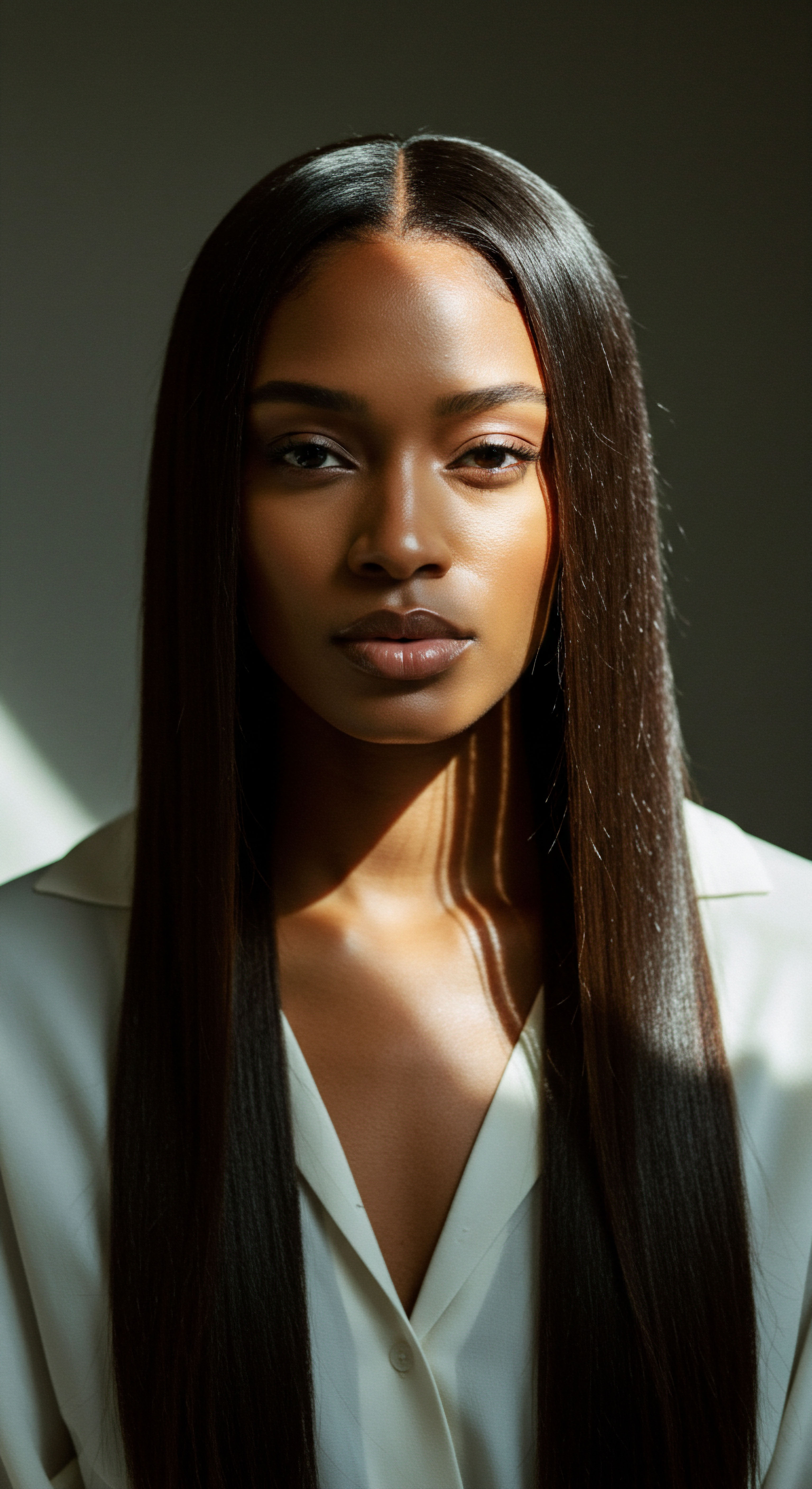
Nighttime Preparations for Hair Well-Being
Beyond the pillowcase, intentional nighttime routines can further protect hair cuticles. Preparing your hair before sleep minimizes potential damage from tossing and turning. Simple practices can create a sanctuary for your strands, preserving their integrity and moisture. One widely adopted method involves securing the hair in a loose, protective style.
A loose braid or a “pineapple” (a high, loose ponytail or bun at the crown of the head) can gather hair, preventing it from spreading across the pillow and rubbing excessively against the surface. This approach is particularly beneficial for curly and coily hair patterns, which are more prone to tangling and breakage.
For centuries, various cultures have recognized the value of covering hair during sleep. From the elaborate silk wraps used by geishas to preserve intricate styles to the bonnets and scarves worn in many African and Afro-Caribbean communities, these coverings serve a similar purpose ❉ to create a barrier between the hair and potentially damaging surfaces. These traditions highlight a collective understanding of hair’s vulnerability during sleep and the wisdom of providing it with a smooth, protective environment.
Another element often overlooked is the state of the hair itself before bed. Sleeping with wet hair, for instance, can render it more fragile. Hair is at its weakest when wet, as the cuticle scales are more lifted and susceptible to damage. Allowing hair to air dry or gently drying it before sleep can mitigate this risk, reducing the likelihood of breakage as it rubs against the pillow.
- Silk Pillowcases ❉ Offer a smooth, low-friction surface, helping cuticles remain flat and hydrated.
- Protective Styles ❉ Loose braids or pineapples reduce hair’s direct contact with the pillow and minimize tangling.
- Hair Coverings ❉ Bonnets and scarves provide a protective barrier, preserving moisture and preventing friction.
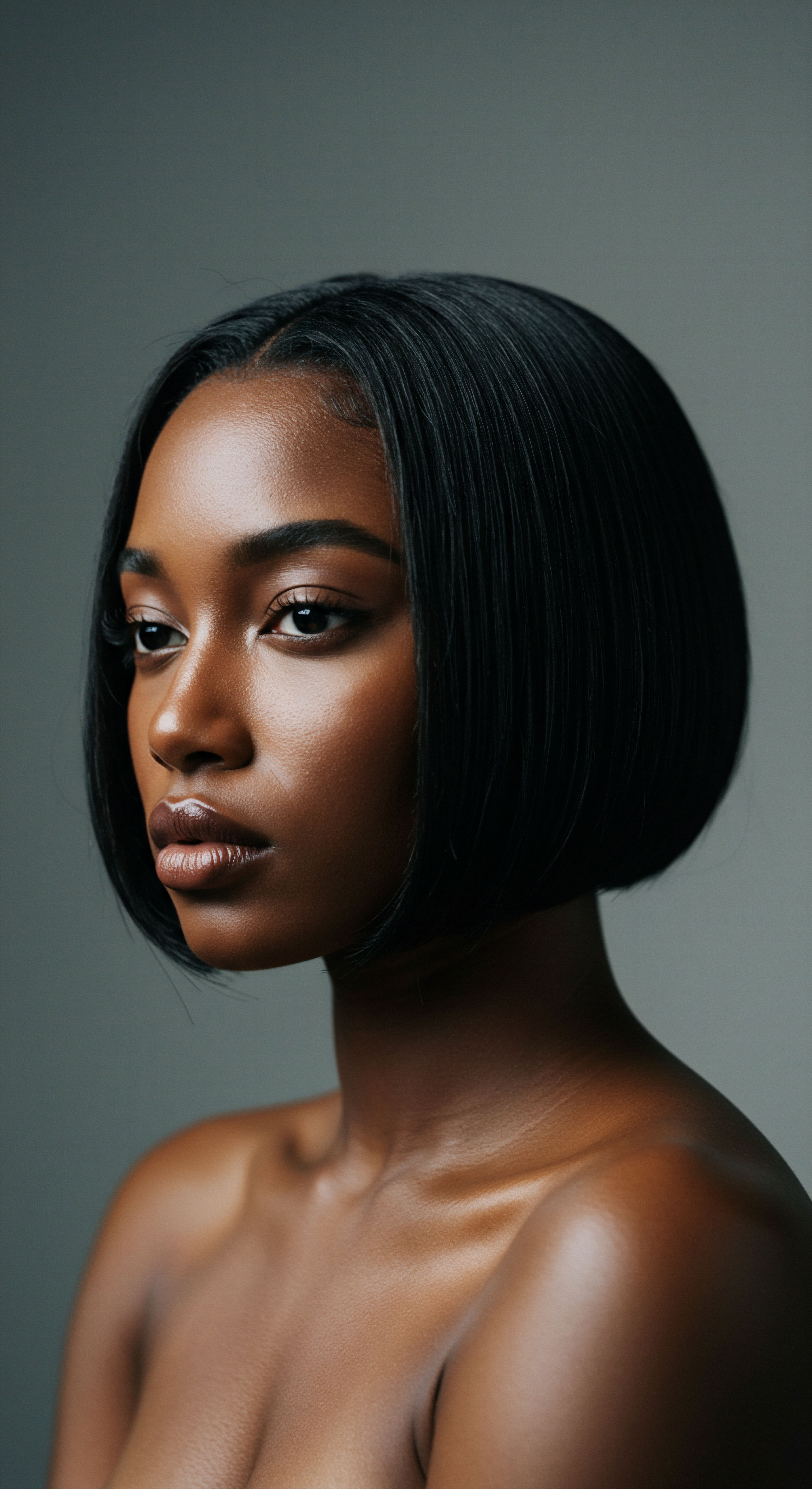
Relay
As we move from the visible practices of hair care to the deeper currents that influence our strands, we find ourselves in a space where science, history, and cultural wisdom converge. The simple act of resting our head becomes a complex interplay of forces, revealing how hair cuticles respond not just to immediate contact, but to the very atmosphere around them and the accumulated wisdom of generations. This section pulls back the curtain on these deeper connections, grounding our understanding in tangible data and shared human experience.
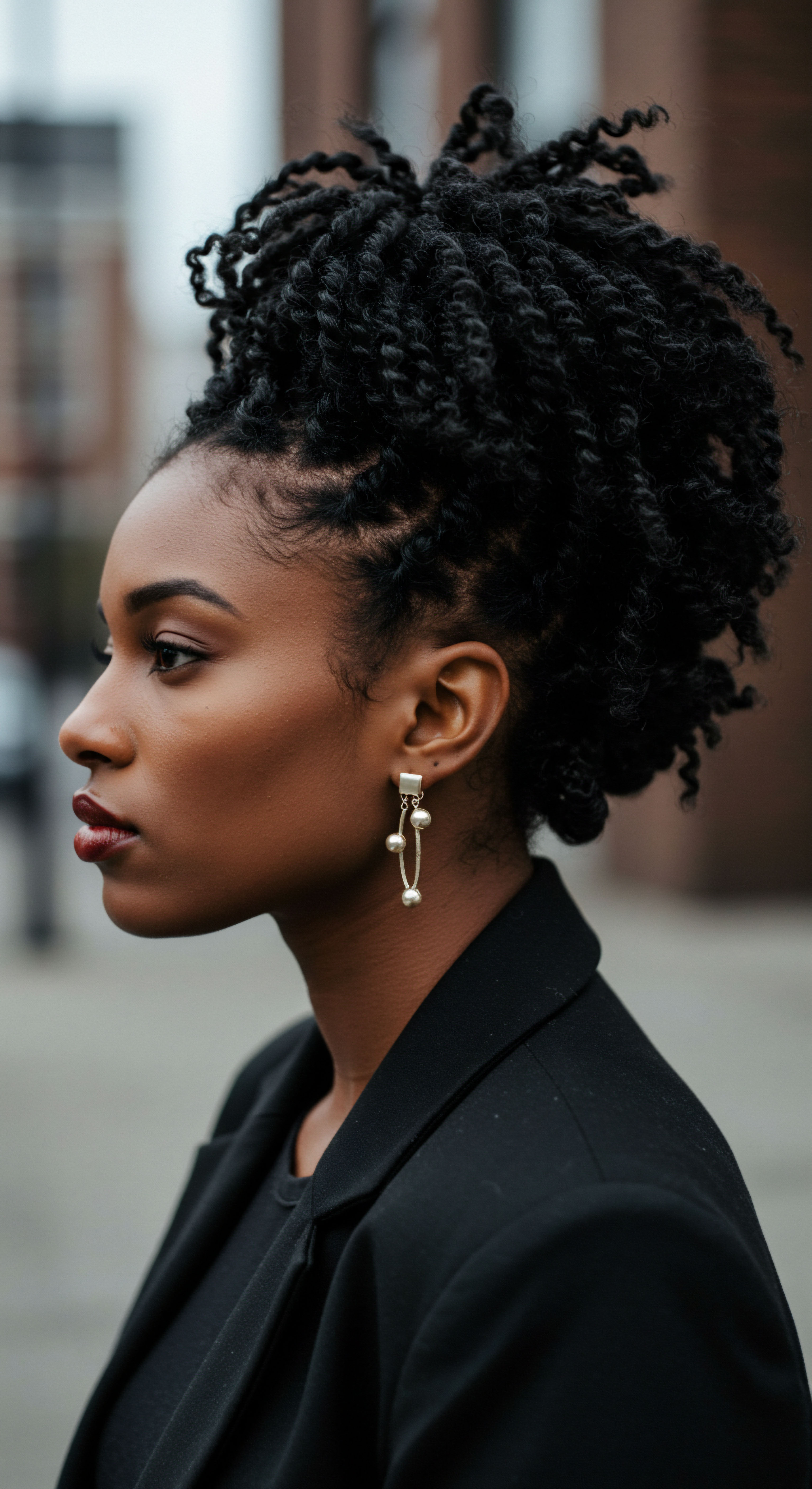
What Does Hair Friction Mean for Different Hair Textures?
The mechanical interaction between hair and a sleep surface, primarily through friction, has a measurable impact on cuticle integrity. While silk pillowcases are widely recommended for their smoothness, reducing friction and breakage, the scientific community has also delved into quantifying these effects. Research into the tribological properties of hair and textiles offers a more granular perspective.
Tribology, the study of friction, wear, and lubrication, reveals how the coefficient of friction (COF) varies between different hair types and fabric surfaces. A lower COF indicates less resistance and thus less potential for cuticle damage.
One area of ongoing scientific discussion concerns the specific friction experienced by textured hair. Studies indicate that Afro-textured hair, with its unique coiled structure, tends to have naturally raised cuticle layers compared to straighter hair types. This inherent characteristic means that even slight friction can cause these cuticles to lift further, leading to increased frizz, tangling, and susceptibility to breakage. The challenge for textured hair is therefore not only about minimizing friction from external surfaces but also managing the friction that occurs between individual strands as they coil and interact.
A study exploring the friction coefficient of various textiles against human hair, including different hair types, has shown quantifiable differences. For example, while silk generally exhibits a lower coefficient of friction against hair compared to cotton, the specific weave and thread count of a cotton fabric can also play a role in its abrasiveness. Some studies suggest that while silk offers a clear advantage, the degree of benefit can also be influenced by the hair’s existing condition and its moisture levels.
A dry, already compromised cuticle will experience greater damage from friction, regardless of the surface, than a well-hydrated, intact cuticle. This highlights the interconnectedness of hair health, environment, and material science.
| Surface Material Cotton (Standard Weave) |
| Typical Coefficient of Friction (Relative) Higher |
| Impact on Hair Cuticles Increased lifting, potential for frizz and breakage, moisture absorption. |
| Surface Material Satin (Polyester Blend) |
| Typical Coefficient of Friction (Relative) Lower |
| Impact on Hair Cuticles Reduced friction, smoother cuticle, less tangling. |
| Surface Material Silk (Natural Fiber) |
| Typical Coefficient of Friction (Relative) Lowest |
| Impact on Hair Cuticles Minimal friction, preserved cuticle integrity, moisture retention. |
| Surface Material Lower friction values are generally more favorable for maintaining cuticle smoothness and hair health. |
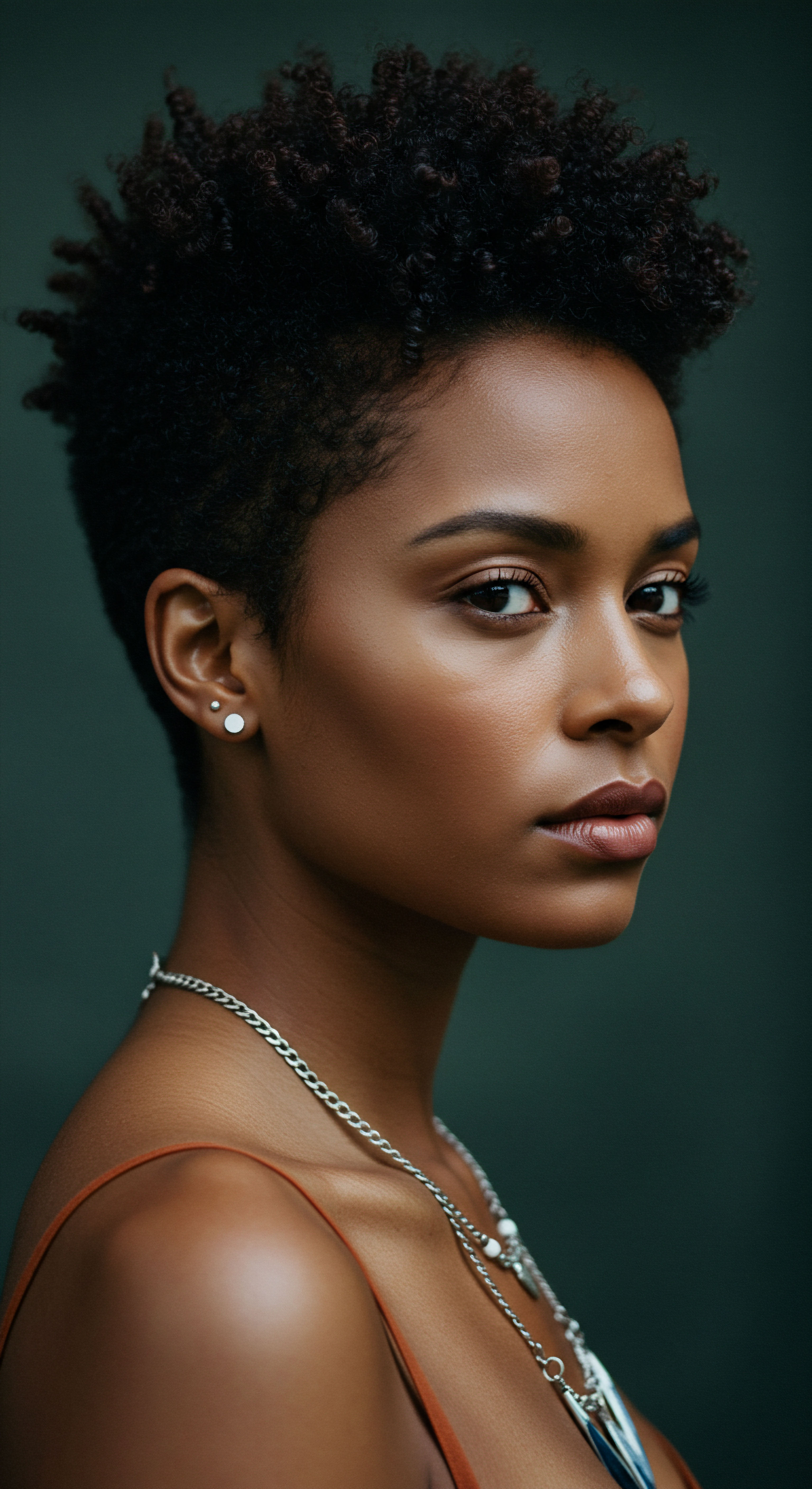
How Do Cultural Practices Inform Nighttime Hair Protection?
The understanding of hair’s vulnerability during sleep is not a modern discovery; it is a wisdom passed down through generations across diverse cultures. Before the advent of mass-produced silk pillowcases, communities around the world developed their own ingenious methods for protecting hair at night. These practices often combined practical necessity with a deep respect for hair as a symbol of identity, beauty, and well-being.
In many African and Afro-Caribbean cultures, the tradition of wrapping hair in silk or satin scarves and bonnets before sleep is a longstanding ritual. This practice serves to protect delicate textures from friction, maintain moisture, and preserve styled hair. This is not merely a beauty regimen; it is often an act of self-care and a continuation of ancestral practices, affirming a connection to heritage.
Similarly, historical records reveal practices in other parts of the world. Victorian and Edwardian ladies, known for their elaborate hairstyles, would often brush their hair thoroughly, massage the scalp, and then braid their long hair loosely before donning nightcaps. These caps, sometimes made of silk, aimed to keep hair tangle-free and glossy, reflecting an early awareness of minimizing friction.
In ancient Japan, geishas used silk wraps, known as “kazashi,” to maintain their intricate hairdos overnight, recognizing the smooth texture of silk as essential for preserving hair structure. These traditions underscore a universal recognition of hair’s fragility during sleep and the proactive measures taken to guard it.
These cultural approaches offer a rich tapestry of wisdom, demonstrating that the concern for hair cuticle health during sleep is a shared human experience, transcending geographical and temporal boundaries. They remind us that while science provides the explanation, human ingenuity and tradition often provided the solutions long before microscopes revealed the intricate details of a cuticle.
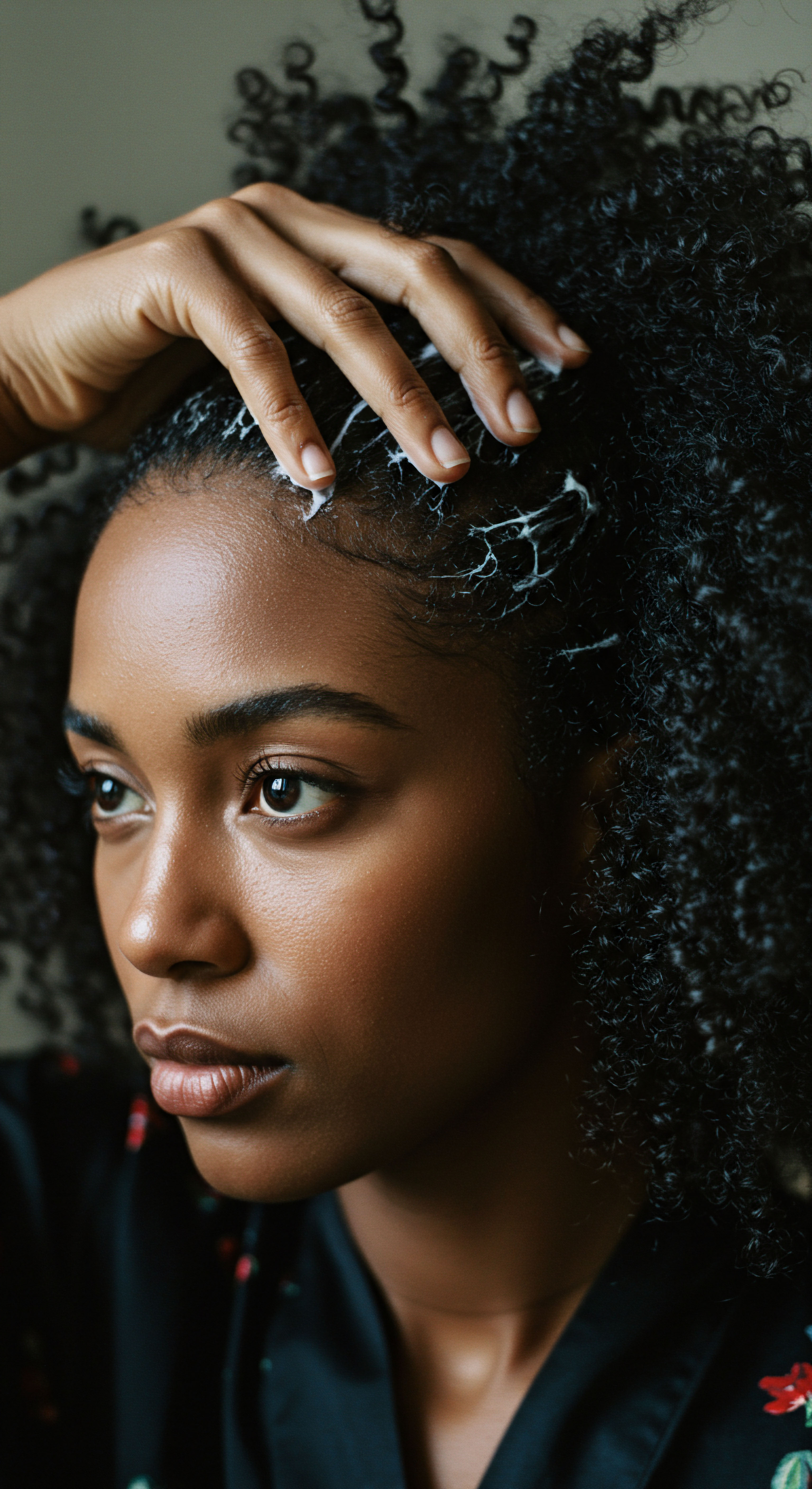
Can Environmental Factors Also Impact Hair Cuticles Overnight?
Beyond direct contact with sleep surfaces, the surrounding environment of your sleeping space can also influence how hair cuticles behave. Humidity, for instance, plays a significant role. When there is a high amount of water vapor in the air, hair tends to absorb this moisture.
This absorption can cause the hair shaft to swell and the cuticle scales to lift, leading to frizz and a disruption of the hair’s natural pattern. For individuals with curly or wavy hair, which can be more porous, this effect is often more pronounced.
Conversely, very dry air, particularly during colder months or in heated indoor environments, can strip hair of its moisture. This lack of hydration can make hair brittle and prone to breakage, as dry cuticles are less pliable and more susceptible to damage from friction. Maintaining a balanced humidity level in your sleeping environment, perhaps through a humidifier in dry conditions, can support hair’s moisture equilibrium and, by extension, cuticle health.
The way we position ourselves during sleep also holds sway. While not a direct environmental factor, sleep position dictates how much pressure and friction certain areas of the hair and scalp endure. Consistently sleeping on one side can lead to localized friction and pressure on hair follicles, potentially causing breakage or thinning over time. Alternating sleep positions or ensuring a smooth pillow surface can mitigate these effects.
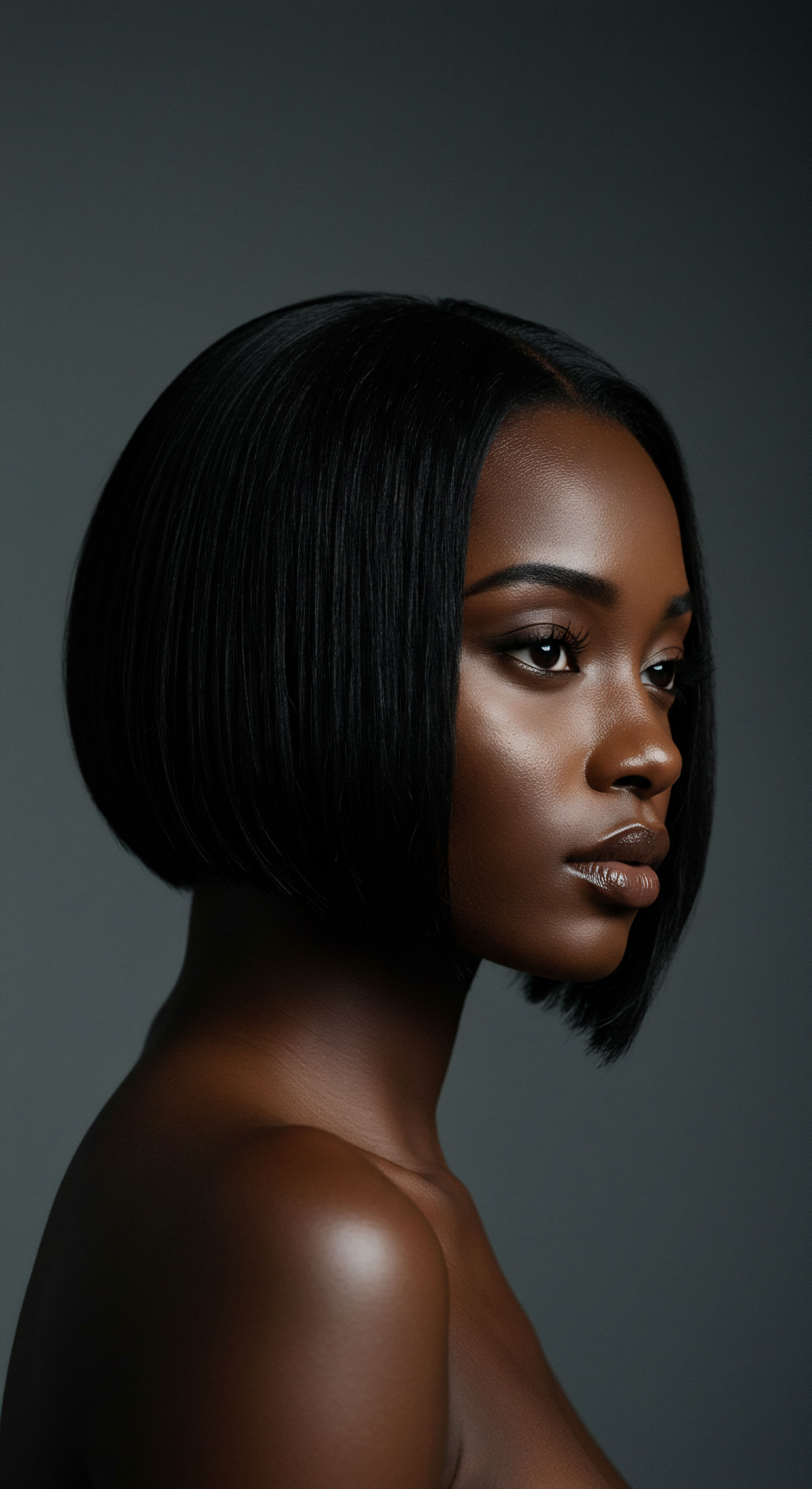
Reflection
As we gently close this exploration of hair cuticles and their nightly encounters, a quiet understanding settles. Our hair, far from being a static adornment, is a living canvas, constantly responding to the subtle whispers of its surroundings. The science reveals its delicate architecture, while the echoes of cultural practices remind us of a timeless wisdom.
Caring for our strands as we rest becomes more than a routine; it is an act of deep reverence, a quiet commitment to preserving the vitality that defines us. In this tender awareness, we find not just answers, but a renewed appreciation for the beautiful complexity of our hair.

References
- Bhushan, B. et al. (2014). Friction Dynamics of Straight, Curly, and Wavy Hair. Journal of Cosmetic Science.
- Garg, S. & Goyal, A. K. (2018). Human Hair ❉ A Review on Anatomy, Chemistry, and Physical Properties. International Journal of Trichology.
- Robbins, C. R. (2012). Chemical and Physical Behavior of Human Hair (5th ed.). Springer.
- McMichael, A. J. & Mugglin, C. (2013). Hair and Scalp Disorders ❉ Medical and Surgical Management. CRC Press.
- Dawber, R. & Van Neste, D. (2004). Hair and Scalp Disorders ❉ Common Problems and Their Management. CRC Press.
- Mercier, A. A. (1930). Coefficient of Friction of Fabrics. Bureau of Standards Journal of Research, 5, 243–246.
- Feughelman, M. (1997). Mechanical Properties of Keratin Fibers. Journal of the Textile Institute, 88(1), 1-17.
- Khazaka, M. & Khazaka, D. (2019). Hair and Scalp ❉ A Comprehensive Guide. Karger Publishers.
- Schueller, R. & Romanowski, P. (2017). Conditioning Agents for Hair and Skin. CRC Press.
- Ansel, H. C. et al. (2011). Ansel’s Pharmaceutical Dosage Forms and Drug Delivery Systems. Lippincott Williams & Wilkins.
- Gavazzoni, M. (2020). Hair ❉ Science, History, and Culture. Springer.
- Gupta, A. & Verma, N. (2016). Hair Care and Treatments. Nova Science Publishers.